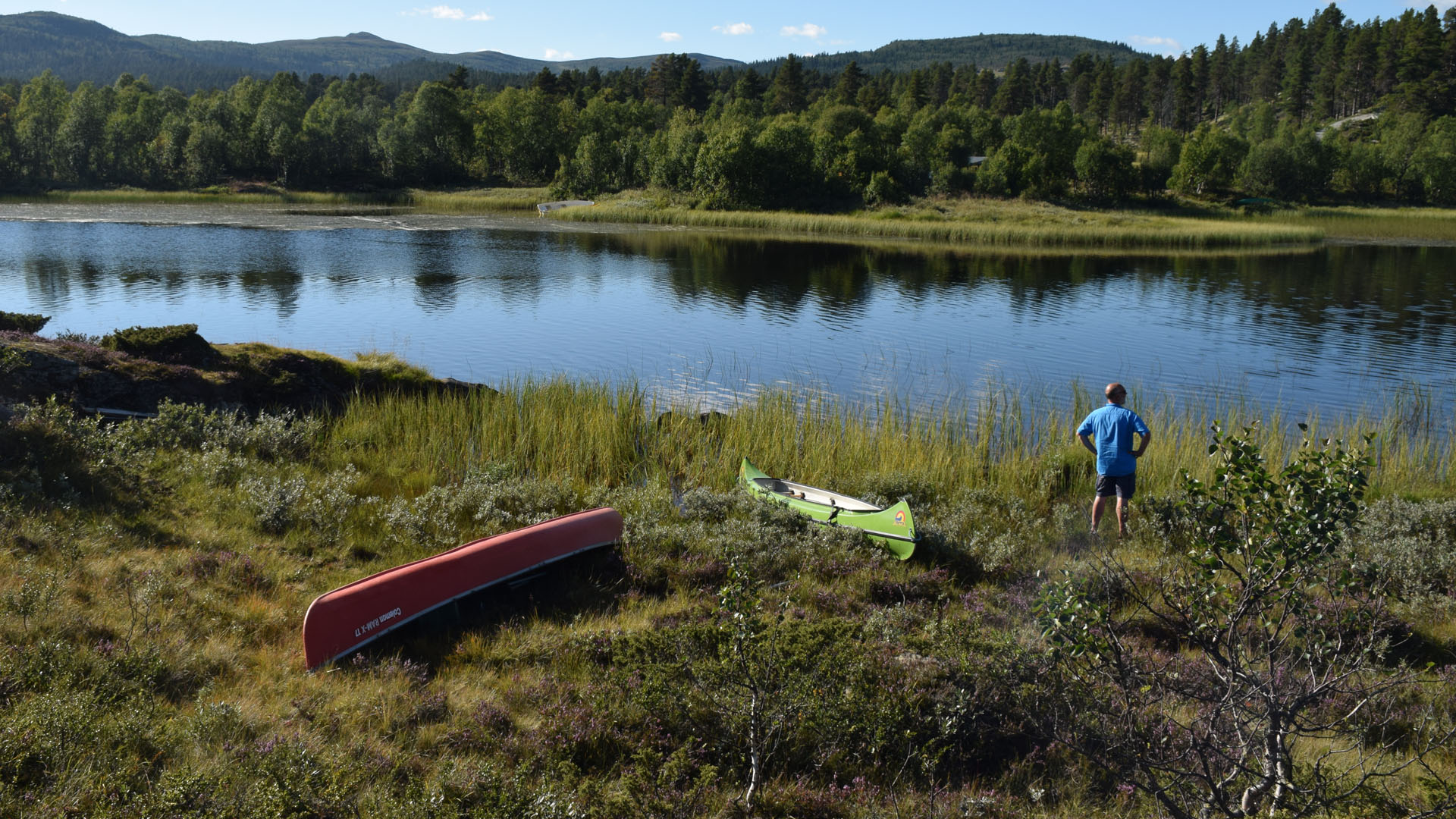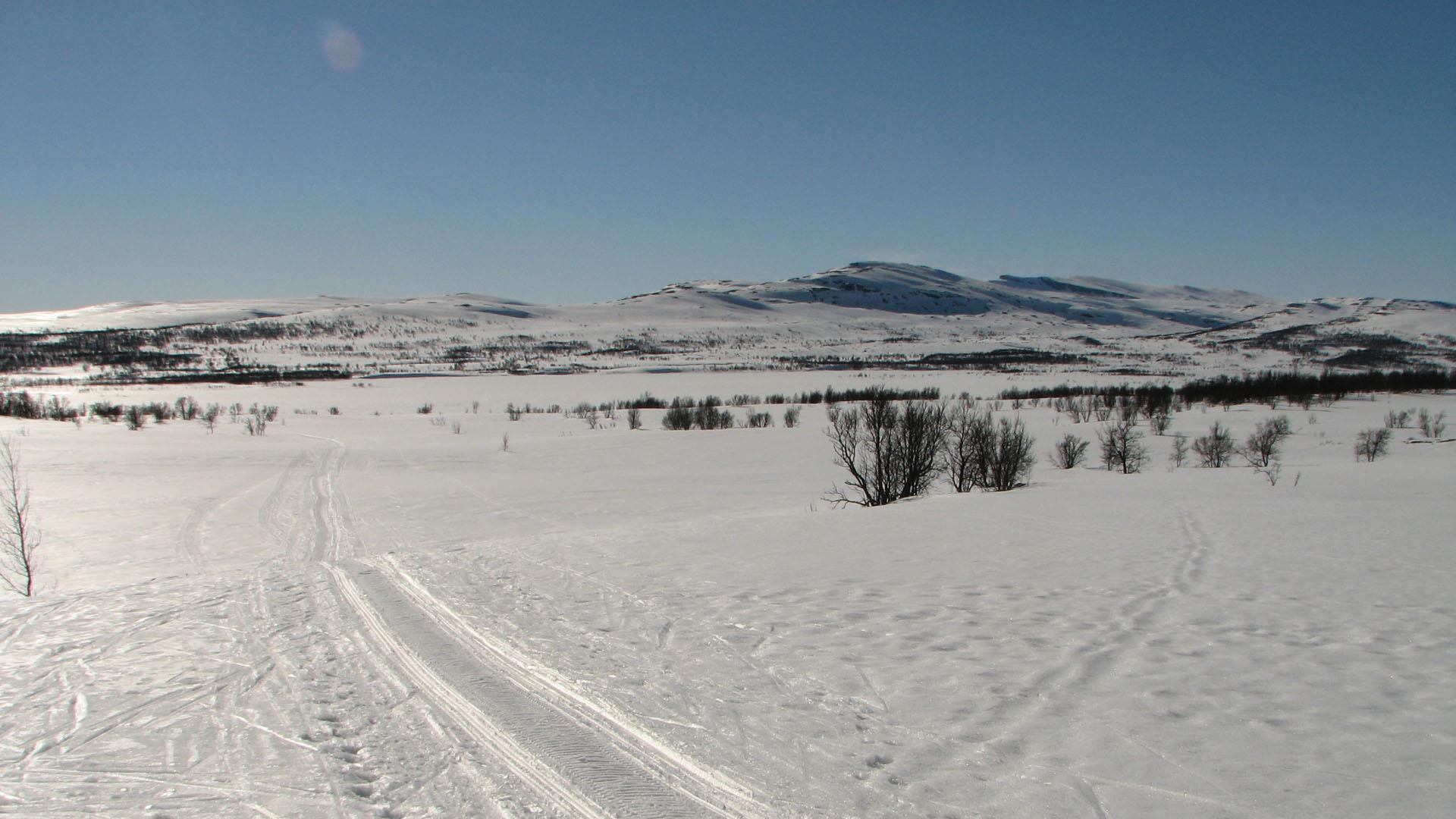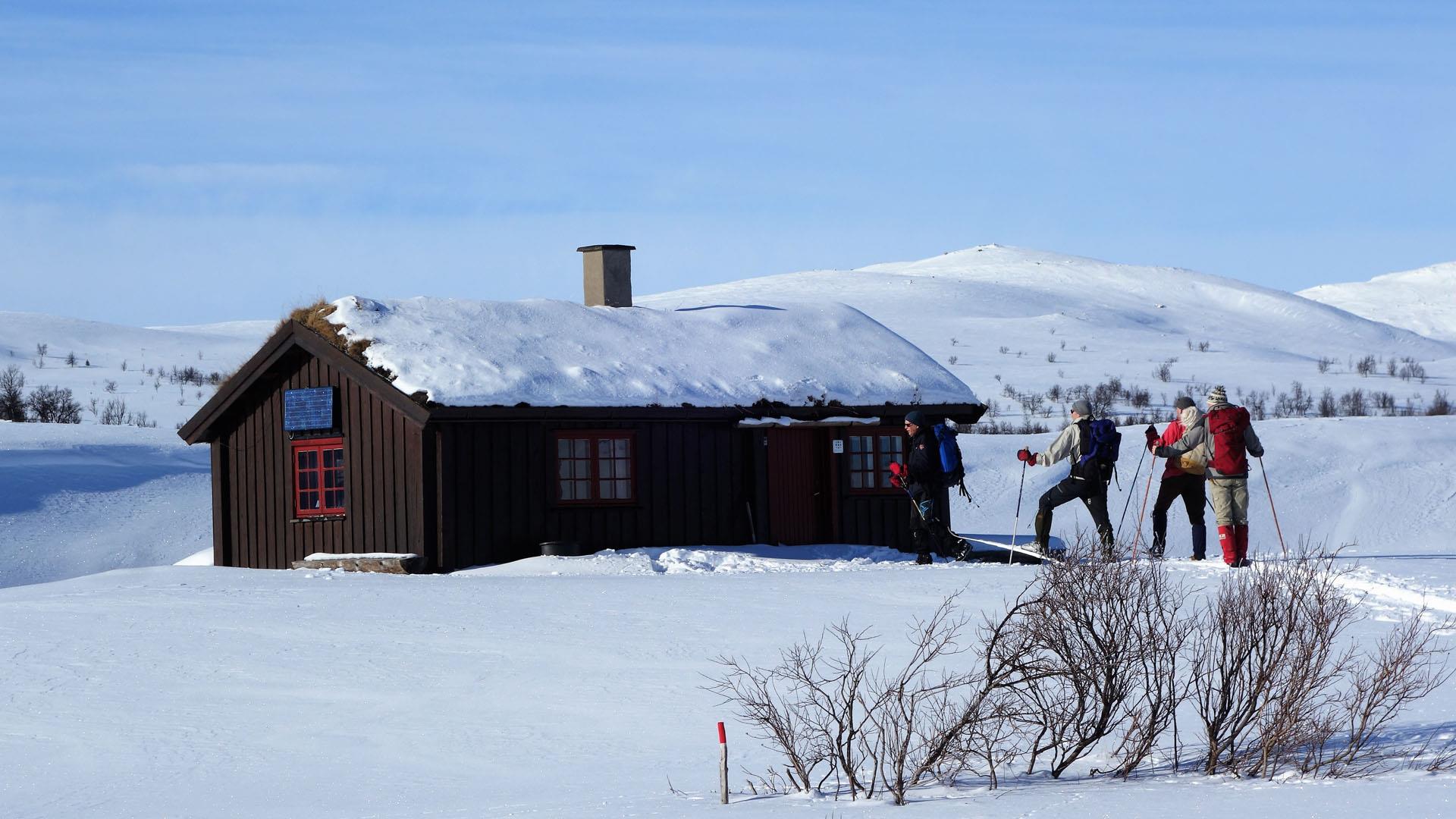How to get there
By car, the boundaries of the national park are easy to reach. When driving south on the E6 in Gudbrandsdalen, the easiest option is to turn right at Vinstra and follow the signs to Skåbu along route 255 (Skåbuvegen). If you are heading north on the E6 and wish to reach the south-western part the park, turn left by Vingrom 10 km south of Lillehammer and follow route 250 (Torpavegen) to the junction by Torpa school. Turn right at the junction and follow Nord-Torpavegen until you reach the junction by Joker Torpa. Then turn right onto route 196 (Synnfjellsvegen) and continue until you reach the junction with route 2442. Turn right onto route 2442 and follow this in direction Forset towards Holsbu café – or use one of the access points to the park along this county road. The shortest route to the national park from the south, however, is to leave the E6 5km north of the turn-off to Lillehammer south. Turn left on to route 255 (Gausdalsvegen) and follow this to Segalstad Bru. Along route 255, turn left in direction Revsjøene or Verket. By Revsjøene you are very close to the national park boundary, whereas from Verket it will take you a good hour to get there. In order to reach Holsbru, turn off by Forset (by route 255) and continue along route 2442 (20 km) direction Fagernes.
Public transport
It is possible to get the train to Lillehammer or Vinstra, and the bus from Vinstra to Skåbu, Ruten, or Dalseter. Natural access points to the park are Storhøliseter and Verket. It is not possible to use public transport all the way. From Lillehammer, you can get the bus to Øvre Svatsum and access the park from there.
Accommodation:
The edge zone in the eastern and northern part of the park, Espedalen and Skåbu, respectively, are excellent places to start or end your hiking trip in Langsua. Accommodations such as Dalseteris an excellent starting points for a good experience.
At the approach gate in the south (Holsbrua) there are several options. Starting from Holsbrua, you will first find a number of prepared campsites inside the barrier, before you come to the serviced DNT cabin Liomseter at the end of the road. In addition, there are self-service DNT cabins.
Paulsrud Gård is located down in the valley floor, not far from Forset, before you get up the mountain, and is a good starting point if you want to explore the national park from several entrances.
Liomseter enjoys a beautiful location in an old cultural landscape, in the heart of Langsua National Park – Gausdal Vestfjell.
Beautifully situated at the top of the valley of Espedalen, Dalseter has a wonderful view of the valley and the mountains in Jotunheimen National Park
A unique experience with overnight stay in the world’s only moose tower - "Elgtårnet".
Paulsrud is a working dairy farm in the Lillehammer region of Norway, with milk production year round. We have 3 beautiful old-style cabins available on the property.
- Monday, 1st January 0001Friday, 31st December 9999
- Monday, 1st January 0001Friday, 31st December 9999
How to get there
By car, the boundaries of the national park are easy to reach.
When driving south on the E6 in Gudbrandsdalen, the easiest option is to turn right at Vinstra and follow the signs to Skåbu along route 255 (Skåbuvegen).
If you are heading north on the E6 and wish to reach the south-western part the park, turn left by Vingrom 10 km south of Lillehammer and follow route 250 (Torpavegen) to the junction by Torpa school. Turn right at the junction and follow Nord-Torpavegen until you reach the junction by Joker Torpa. Then turn right onto route 196 (Synnfjellsvegen) and continue until you reach the junction with route 2442. Turn right onto route 2442 and follow this in direction Forset towards Holsbu café – or use one of the access points to the park along this county road.
The shortest route to the national park from the south, however, is to leave the E6 5km north of the turn-off to Lillehammer south. Turn left on to route 255 (Gausdalsvegen) and follow this to Segalstad Bru. Along route 255, turn left in direction Revsjøene or Verket. By Revsjøene you are very close to the national park boundary, whereas from Verket it will take you a good hour to get there. In order to reach Holsbru, turn off by Forset (by route 255) and continue along route 2442 (20 km) direction Fagernes.
Public transport
It is possible to get the train to Lillehammer or Vinstra, and the bus from Vinstra to Skåbu, Ruten, or Dalseter. Natural access points to the park are Storhøliseter and Verket. It is not possible to use public transport all the way.
From Lillehammer, you can get the bus to Øvre Svatsum and access the park from there.
.jpg)
Hiking, cycling and cross-country skiing right on the edge of Langsua
Right next to the national park, with a view into the mountain home, there are several hiking, cycling and cross-country trails. Espedalen/Skåbu, which is the farthest north in the area, has several accommodations, with marked trails and groomed cross-country trails in the immediate vicinity of accommodations.
If you drive towards Langsua via Forset, in the summer there are plenty of good options for paths and cycle tours around the national park. In winter, the area has a number of good cross-country trails. A tip might be to look towards Synnfjell if you want to plan longer trips.
Why is this national park special?
The area has been protected to preserve a vast low-mountain landscape with important habitats for rare and vulnerable plant and bird species, cultural heritage sites, and characteristic geological features from the Quaternary.
Flora and fauna
If you look carefully, you may find sedge variants such as the carex heleonastes and carex laxa as well as orchids and the bearded bellflower. Langsua is abound in elk, and several hundred animals migrate through the area in spring and autumn. If you are lucky, you get to see rare bird species like the greater scaup, hen harrier, broad-billed sandpiper, and one of Norway’s largest stocks of great snipe.
History and culture
As for many mountain areas in Norway, it was the wild reindeer and elk that brought humans to Langsua 10 000 years ago. We can still see traces of the old hunting grounds used by these early settlers. Later, it was common to see farmers with droves of cattle in the area. These came from Western Norway and Ottadalen and passed through on their way to the autumn markets in Viken. Remains of their mountain shelters and huts can still be found. Iron mining was an important activity in the area from around 200 BC until 600 AD, and also during the period after the Viking era and until the 1400s. There are clear traces of this activity in Gausdal Vestfjell.
Surrounding nature reserves and conservation areas
Hersjømyrin Nature Reserve
Espedalen Conservation Area
Hynna Nature Reserve
Oppsjømyra Nature Reserve
Skardberga Nature Reserve
Storlægeret Conservation Area
Røssjøen Nature Reserve
Kjølaåne Nature Reserve
Further information:
Download brochure with map.
The national park’s website and management and administration boards.
Surrounding nature reserves and conservation areas
Hersjømyrin Nature Reserve
Espedalen Conservation Area
Hynna Nature Reserve
Oppsjømyra Nature Reserve
Skardberga Nature Reserve
Storlægeret Conservation Area
Røssjøen Nature Reserve
Kjølaåne Nature Reserve
Further information:
Download brochure with map.
The national park’s website and management and administration boards.
 Langsua National Park / photo: Morten Liebe
Langsua National Park / photo: Morten Liebe.png)
.png)









.jpg)








#visitlillehammer